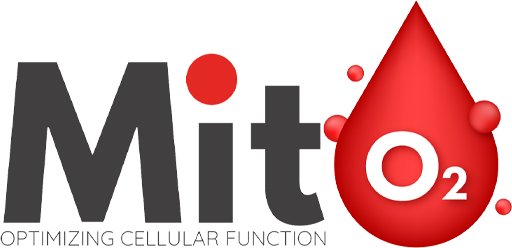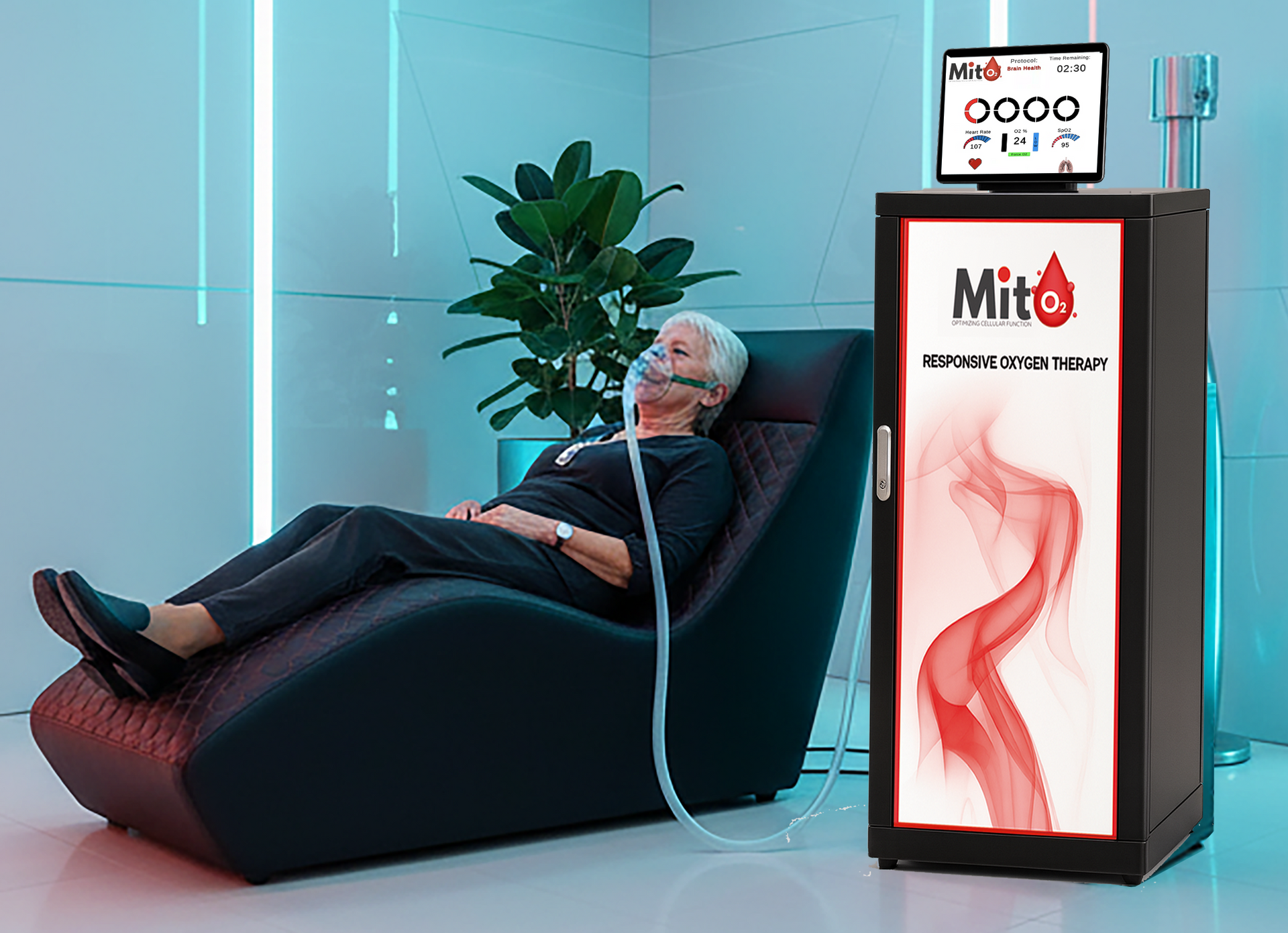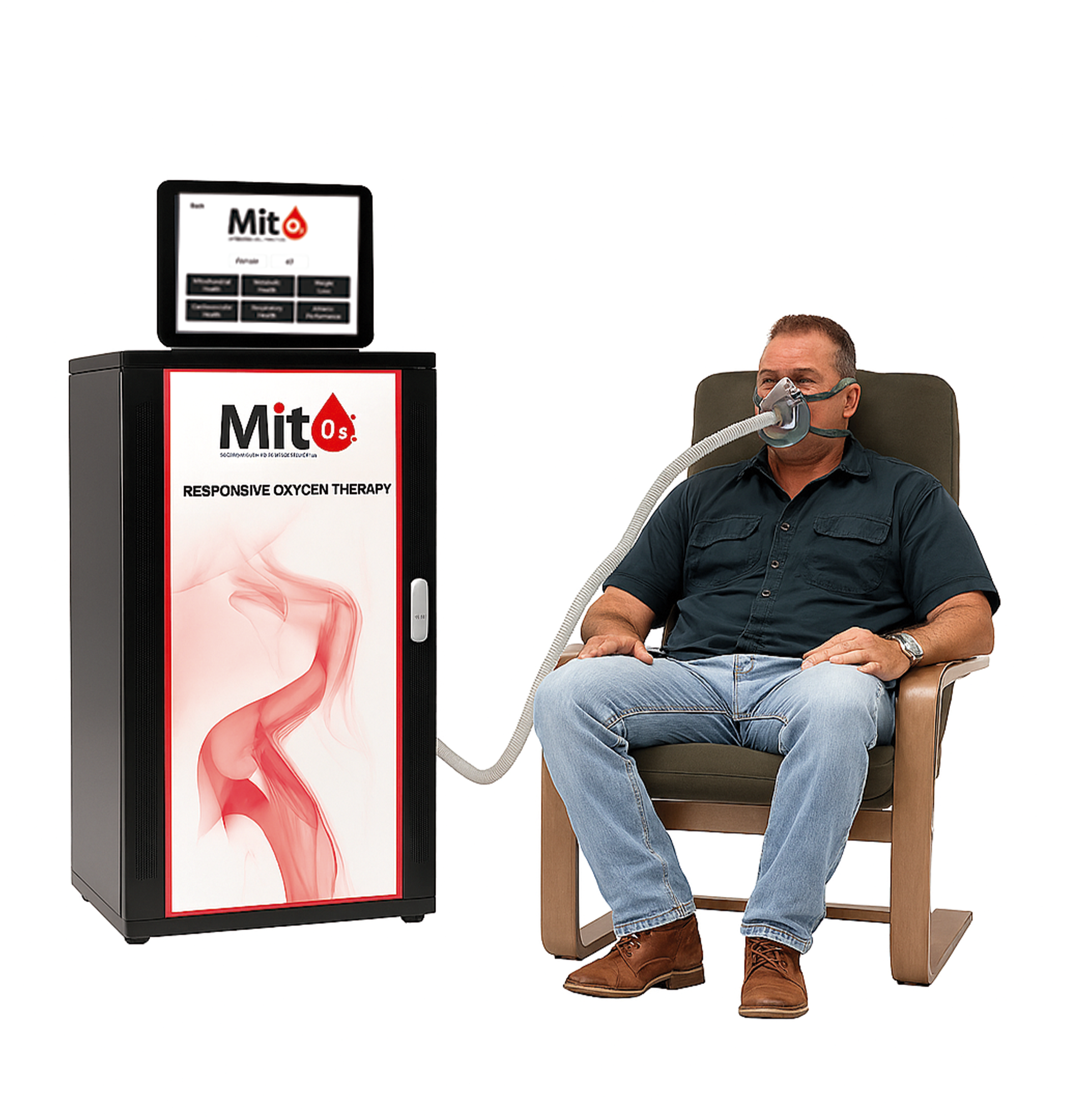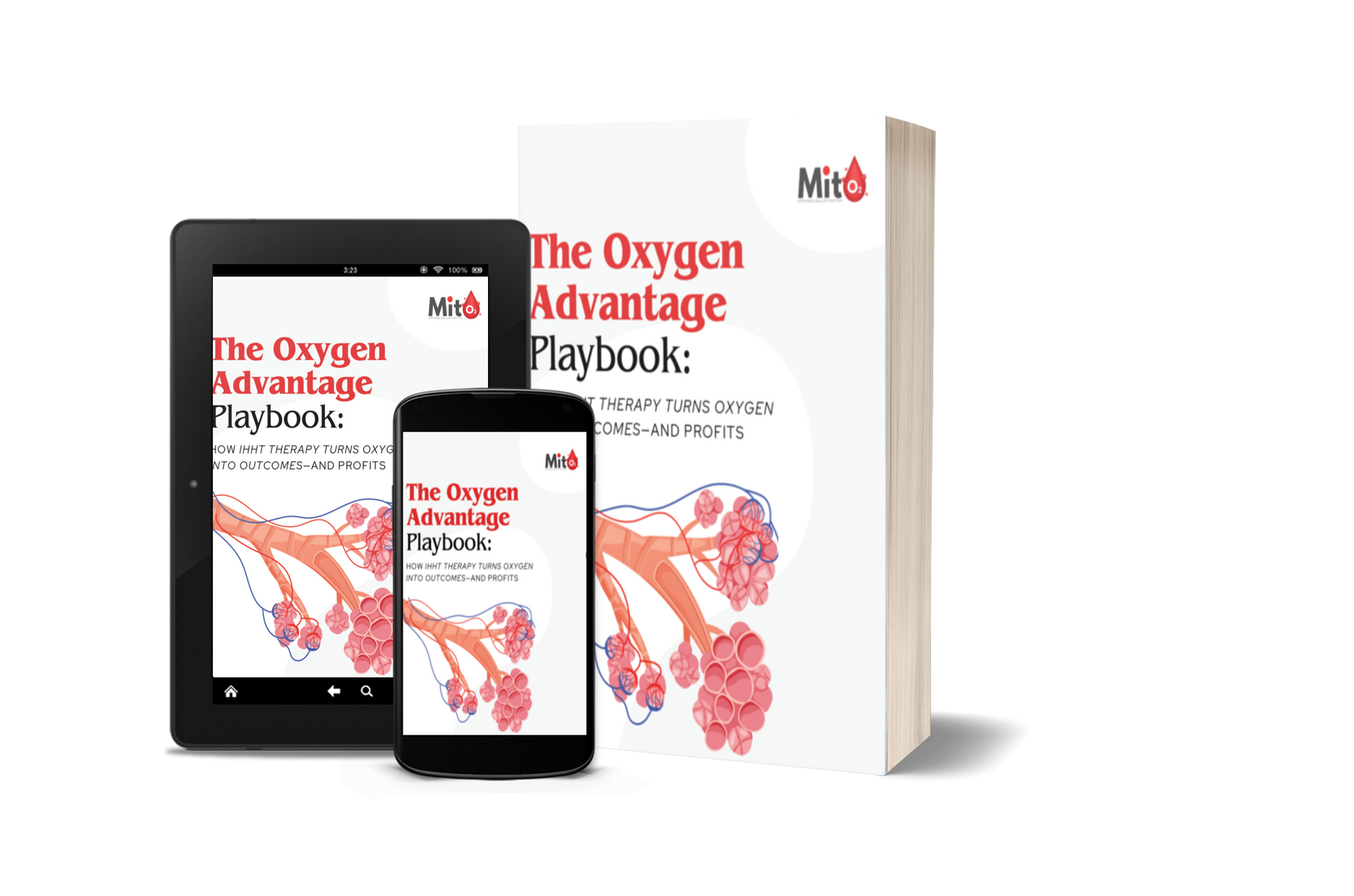Add Responsive Oxygen Therapy—
No Chamber, No Hassle, All the Healing Patients Want
Mito2™ Responsive Oxygen: Smarter Therapy for Active & Restorative Care
How Responsive Oxygen TherapyTechnology Works
Relaxed Mode
Stay youthful, slow the clock, and strengthen your body’s natural defenses.
Benefits:
- Anti-Aging
- Longevity
- Preventive Health
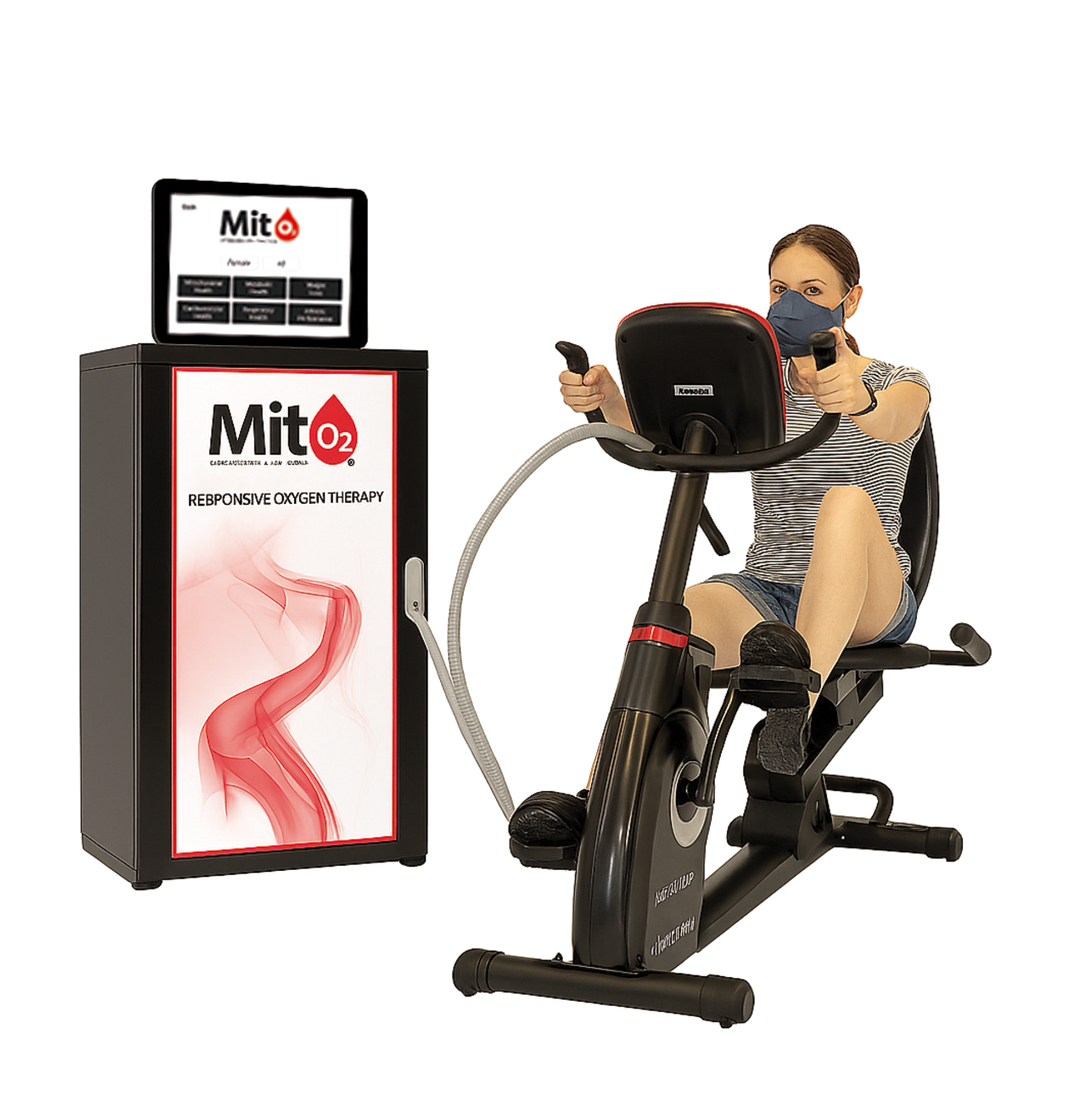
Athletic Mode
Boost stamina, speed recovery, and unlock your body’s peak performance.
Benefits:
- Performance
- Recovery
- Endurance / Cardio
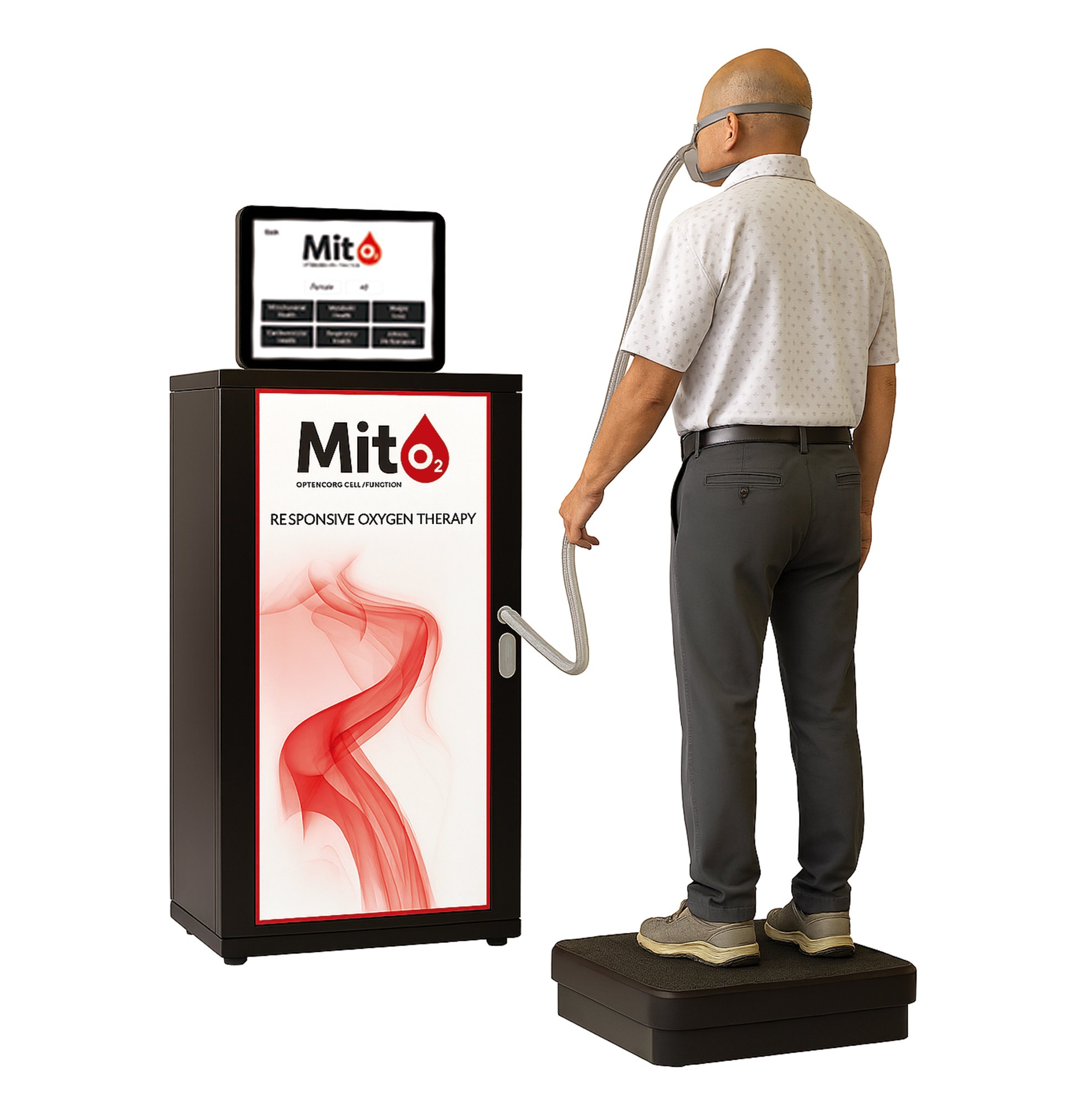
Therapeutic Mode
Ease symptoms, restore energy, and support lasting healing from within.
Benefits:
- Nerve Repair
- Chronic Fatigue
- Fibromyalgia
- Circulation Support
Disclaimer: Images shown include demonstration equipment and furnishings that are not part of the standard unit purchase. Exercise machines, chairs, and platforms are for illustrative purposes only.
Struggling to Help Complex Patients Heal Faster?
Discover a Better Way to Treat Chronic Inflammation, Neuropathy, and Metabolic Dysfunction—Without Drugs or Chambers.
3 Quick Benefits of Reading the Playbook:
- Learn why oxygen imbalance is behind most chronic conditions (and how to correct it fast)
- Discover how IHHT compares to hyperbaric therapy—without the cost or complexity
- See how clinics are using Mito2 to treat neuropathy, inflammation, and weight issues in just 15–20 minute sessions
Frequently Asked Questions
What is the Mito2?
Mito2 Responsive Oxygen Unit is designed to facilitate healing by super-saturating nearly all body tissues (especially brain, kidney, liver) plasma and lymph with very high levels of oxygen that permeates the tissues through an exercise component.
What is IHHT - Intermittent Hypoxia/Hyperoxia Training?
Intermittent (also called interval or periodic) hypoxic training (IHT) combines episodes of hypoxia, interspersed with episodes of normoxia, hypoxia of lesser severity, hypercapnia, or hyperoxia. Mito2 Respsonsive Oxygen Unit, utilizes one of the variants mentioned above – Intermittent Hypoxia/Hyperoxia Training. Accumulated data indicates that a “low dose” of hypoxic training can be a simple, safe, and effective method with significant therapeutic potential for clinical practice. Unlike prolonged hypoxia, which significantly reduces the initial increase in ventilation and increases the magnitude of ventilation decline, periodic hypoxia does not decrease in ventilation (Nieuwenhuijs et al., 2000).
Intermittent Hypoxia/Hyperoxia Training Benefits:
1. INCREASES OXYGEN CIRCULATION IN THE BODY
IHHT gets oxygen into the arteries, veins, and even the smallest capillaries that make up over 74 percent of your circulatory system. By increasing oxygen circulation in the body, your cells are getting the O2 that they need to process the millions of bio-chemical reactions they undergo every day.
2. INCREASES BLOOD FLOW
All body processes require adequate blood flow, but stress and certain medical conditions can disrupt the blood’s ability to release oxygen into our tissues. We know that a decrease in oxygen supply to your blood can severely damage the function of your brain, liver, and other organs. We need our blood to carry oxygen to our tissues for all body systems to work properly.
This is another major benefit of IHHT. As oxygen circulation increases throughout the body, our oxygen-rich blood is able to send the O2 to our tissues, vessels, and organs.
3. MECHANISMS TRIGGERED BY HYPOXIC CONDITIONING
Whether acute or repeated, IHHT is accompanied by substantial changes in gene expression. A crucial mediator of this genomic response is the hypoxia-inducible factor 1 (HIF-1) transcription factor, a key regulator of cellular oxygen homeostasis. Although more than 100 direct target genes have been identified for HIF-1, we will highlight just a few that are induced while using the Mito2:
a. EPO (Erythropoietin) – EPO is a hormone produced primarily by the kidneys, with small amounts made by the liver. EPO plays a key role in the production of red blood cells which carry oxygen from the lungs to the rest of the body. EPO is also well recognized as a protective agent against ischemic injury.
b. Angiogenesis - The process that forms new capillaries out of existing blood vessels in your body that can reach areas of tissues that have no other blood supply. Angiogenesis helps your body heal from wounds, allows for greater oxygen exchange, and increases VEGF (vascular endothelial growth factor) expression.
c. Autophagy and Mitophagy –
Autophagy is a process that involves the degradation and recycling of cellular components. Mitophagy is a selective type of autophagy that removes faulty mitochondria. Mitophagy is important to our longevity, health span, and critical for cellular health. Mitophagy is often found to be defective in neurodegenerative diseases such as Alzheimer’s disease, Parkinson’s disease, and Huntington’s disease.
Mito2™ Responsive Oxygen
Unit Advantages
Built-in Safeguards
Ability to set the maximum heart rate of your patient along with the minimal level of SpO2 and heart rate.
Real-Time Data Capture
The wireless Pulse Ox monitors heart rate and blood oxygen levels. Our system displays real-time information and allows you to capture/track patient's progress.
Dual O2 System
Two reservoirs, one with Low O936-588-5510%) and the other with High O2 (>75%). Our system is software-driven and allows the user to manipulate when your patient will enter and exit out of high or low O2.

